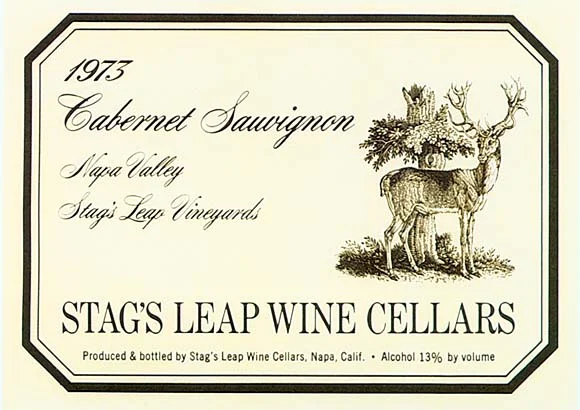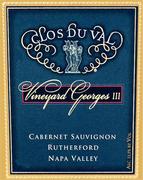How to Read a Wine Label: North American Wines

While each state has its own specific rules for labeling wine, the following pieces of information are universally required to be on wine labels of all American wines in order to ensure the accuracy of what is in the bottle:
- Winery or Owner's Name
- Contents of the bottle
- Declaration of Sulfites
- General Health Statement
Since California is the largest producer of wine in the U.S., we will focus on their wine labels and, in particular, the one above from top to bottom:
First we have the year. This shows that at least 95% of the grapes in the bottle are from that specific vintage. Some wines, especially sparkling, dessert and port wines, will not list a year because they are a blend of grapes from multiple vintages.
Then, you have the type of wine that's in the bottle. In this case the wine is a Cabernet Sauvignon. This is the biggest difference between French and American wine labels: most French wines are labeled by the region from which it is made (Bordeaux, etc) and American wines are called by the varietal, or grape (Cabernet Sauvignon, Merlot, etc).
To list a particular varietal on the bottle, like Cabernet Sauvignon or Merlot, the wine must be made up of at least 75% of those grapes. If not, then it must be called a blend.
Most often wineries will use the term Proprietary blend or Reserve blend on their labels. But some, in an effort to evoke higher quality and prestige similar to Bordeaux, will opt to pay a fee and put the term Meritage on the label.
Contrary to popular belief, Meritage is not a French word and is not pronounced as such, but rather, it's a portmanteau word of 'merit' and 'heritage' and rhymes with 'heritage'. It only means that the juice inside the bottle is a combination of at least two of the following varietals: Cabernet Sauvignon, Merlot, Petite Verdot, Cabernet Franc, Malbec, Carignane, St. Macaire and Gros Verdot with no single varietal making up more than the 90% of the total volume.
Whew...there's more!
Beneath the type of wine, you can see that the AVA or wine region is listed. In this case, the AVA is Napa Valley and by law at least 85% of the grapes must come from this region. Beneath Napa Valley, you'll see a specific vineyard listed, Stag's Leap Vineyards. To have a particular vineyard, or single vineyard placed on the label, there must be at least 95% of the fruit from that vineyard. Other popular single vineyards you may have seen include Beckstoffer To Kalon in Oakville and Georges III in Rutherford.
Further, to be considered an Estate bottled wine, the following criteria must be met: the vineyards and the winery are located within the specific AVA, 100% of the grapes must be owned by the winery and come from their vineyards, and finally, the entire winemaking process must be completed within that winery.
Additional, yet amusing, information that's required to be on the label is the sulfite warning and general health statement.
SO HERE'S THE DEAL ABOUT SULFITES:
- All wines contain sulfites. Yeast naturally produces sulfites during fermentation so hardly any wines are without them.
- The US requires a "sulfite" warning label, but nearly all winemakers add sulfites, including those in France, Italy, Spain, Australia, Chile, etc.
- There are very few winemakers who make wines without adding sulfites. In the U.S., organic wine must be made without added sulfites, but that's it. Organic wines can be hard to find, but not impossible, so check out natural/health food stores.
- Sulfites do not cause headaches!!! Many people seem to connect their headache with the sulfite warning label, but there is NO connection. What causes headaches is drinking too much wine on an empty stomach, so share tastes and carry a baguette! Dried fruit also contains sulfites, so try eating some dried apricots, and see if you get a headache then. If not, sulfites are not the enemy.
(Thank you UC Davis!)
Ultimately, the reasoning behind all of these rules is not necessarily meant to control for quality, but to ensure the validity of what is actually in the bottle. But enough about the labels, start tasting some wine!
- American wines are labeled by the name of the grape, NOT by the region.
- To be label a wine as a Cabernet Sauvignon, Merlot, Chardonnay, or any other varietal, that grape must make up at least 75% of the wine.
- To put the AVA or region on the bottle, at least 85% of the grapes must be from that region
- To say that the wine is from a particular vineyard or a single vineyard, at least 95% of the grapes must be from that vineyard.
- To use the term Estate on a label, it must be 100% from vineyards owned by the winery
- Sulfites are in ALL wines (and dried fruit) and are rarely the cause of headaches.






